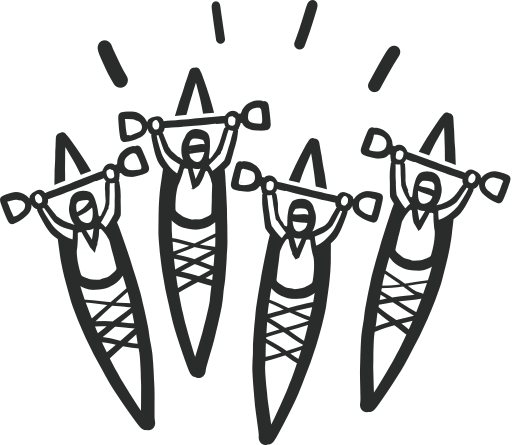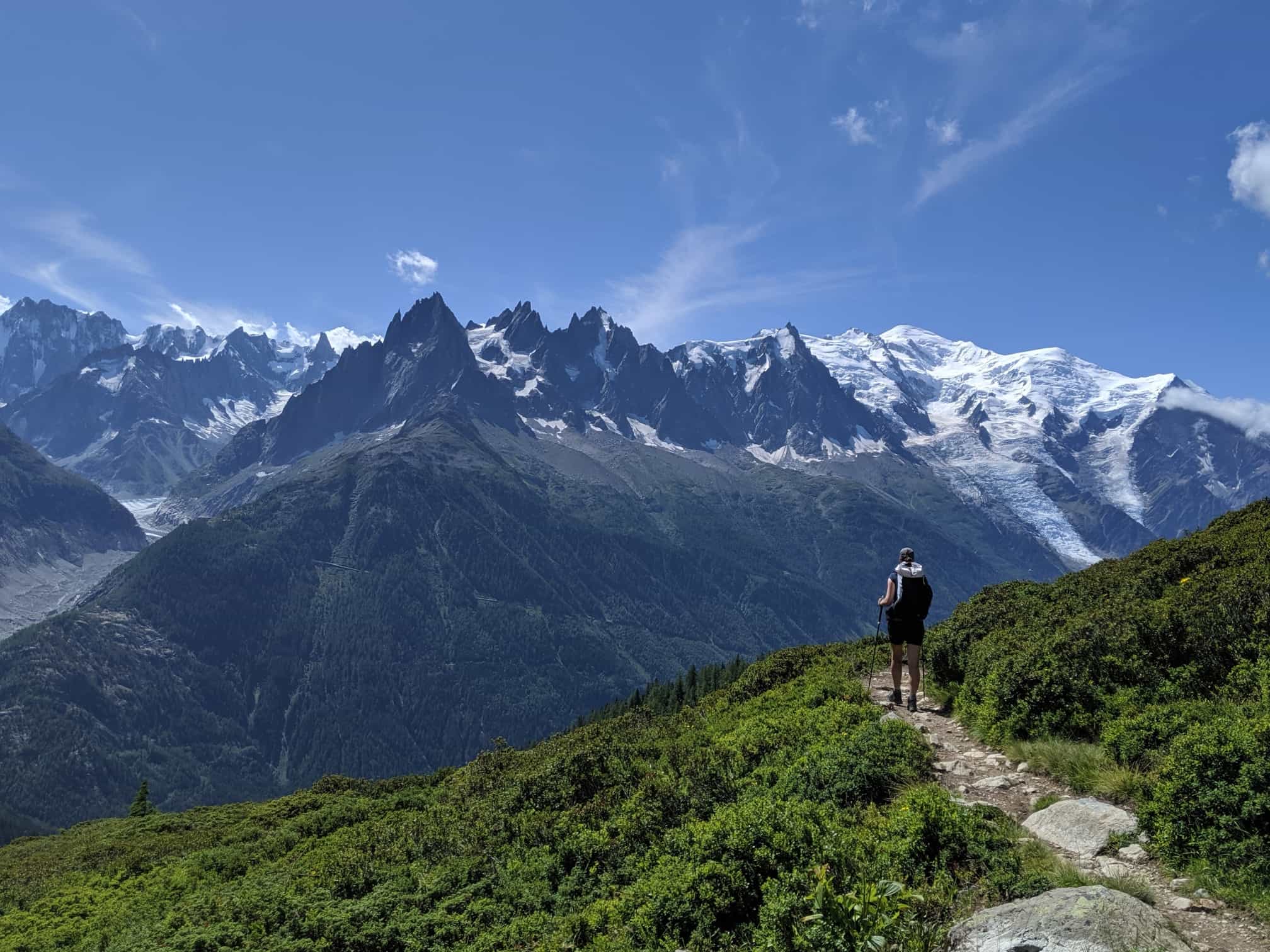
Trek the Tour Du Mont Blanc in a Week: The Hotels Edition
Tackle one of the world’s greatest hikes with a touch of comfort whilst you meander through the heart of the Alps
What's Included?
Activities & Certified Guides
All itinerary activities with experienced, English-speaking mountain guidesHotel
6 nights in village hotelsMeals
6 breakfasts, 7 lunches, 5 dinnersTransfers
All transfers throughout the trek, via a mix of private vehicles and public busesLuggage Transfer
Luggage transfer of your main bag throughout the tripSmall Like-minded Groups
Solo-friendly by design, join our small n’ sociable groups of up to 12 like-minded, active and outdoorsy people…
What's it like?




Border-hop your way through the Alps, crossing from France into Switzerland and Italy as you circumnavigate the Mont Blanc massif
Trek beneath towering 4000m giants, traverse valleys and reach high passes for epic lookout spots over Lac Blanc and the Cheserys Lakes
Bunk down in cosy village hotels as you tackle 'the TMB' in style, refuelling each evening on tasty French, Swiss and Italian mountain cuisine
Sucker for a mountain hut? Then check out our classic Tour du Mont Blanc in a Week trek instead
Key Information
Day 1
The trek begins: La Flégère to Argentière
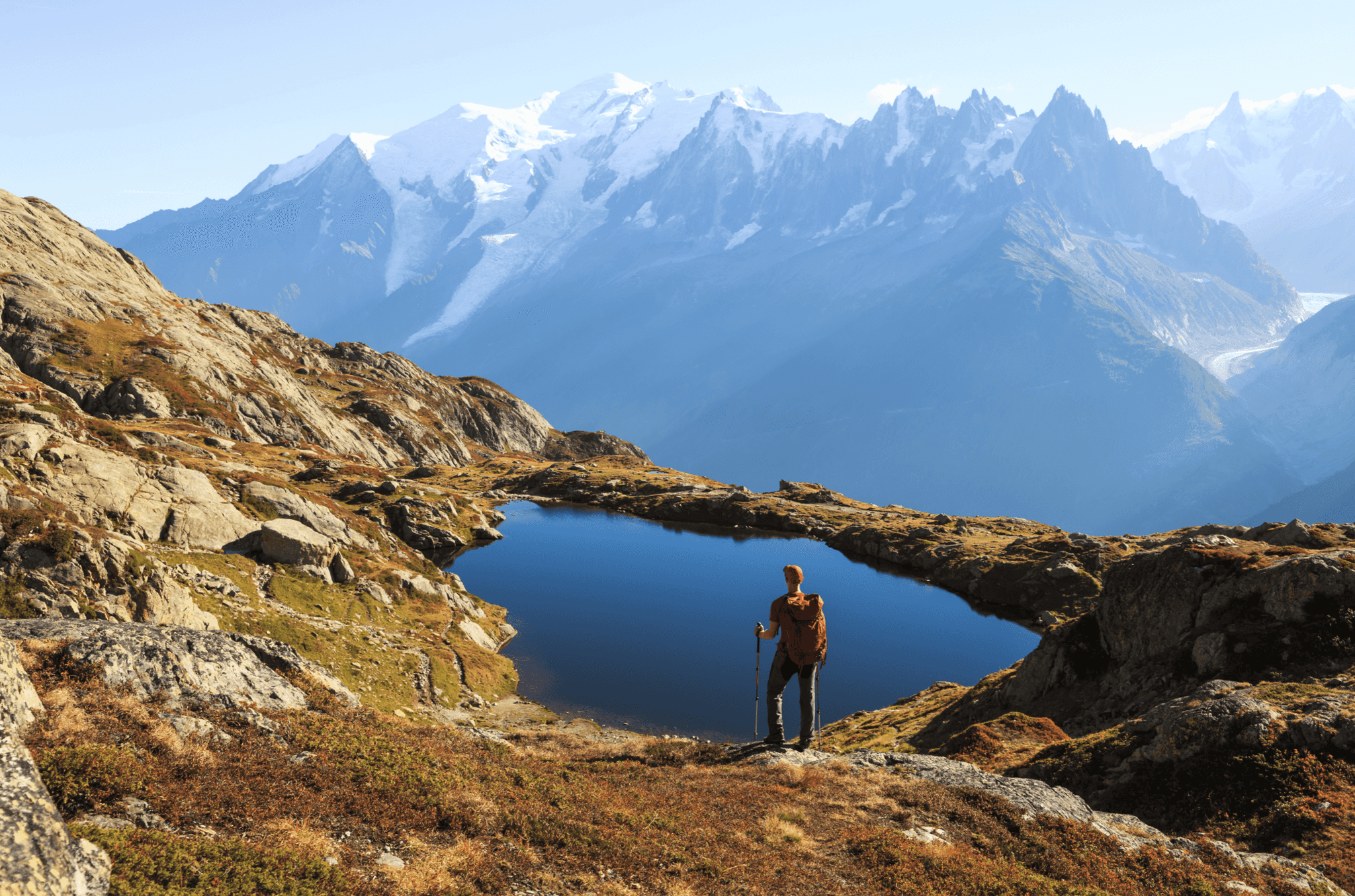
Hiking
Meet up with your guide first thing this morning and head to the cable car station for the ride up to La Flégère at 1877m, taking in the breathtaking views of the Mer de Glace valley on the northern slopes of Mont Blanc. Hit the Tour du Mont Blanc trail, beginning along a balcony path and ascending steadily up to Lac Blanc (2353m) and its spectacular view of the massif. Tuck into a picnic lunch here accompanied by clear views of Les Drus, the Aiguille Verte, the Aiguille du Midi and the Mont Blanc summit. This afternoon, continue along the trail passing by the Cheserys Lakes, descending down one of the most scenic trails in France to where you'll spend the first night of your trip in a peaceful hotel in Argentière.
Day 2
Argentière to Trient
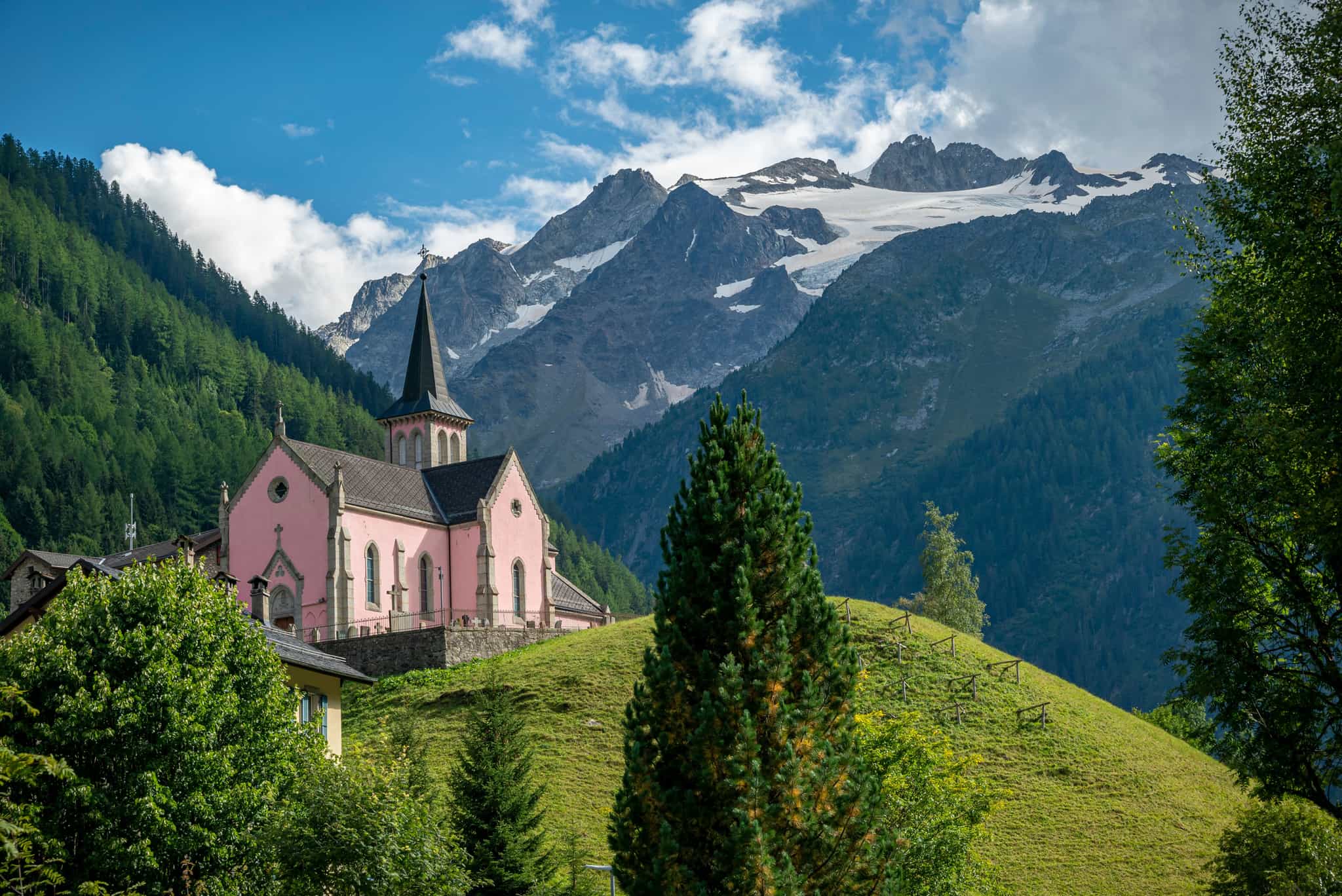
Hiking
Tuck into a big breakfast at your hotel in Argentière before a short transfer to Tré le Champ to pick up the trail. The panoramas get better and better today as you make your way up to the Col de Balme (2191m) on the border between France and Switzerland. During the early summer months, this part of the Alps is full of wildflowers including Alpine orchids, with the blooms often continuing into August. Grab an ice cream at Refuge du Col de Balme before reaching the point which marks the crossing of the border into Switzerland. Descend through the woods all the way down to Trient for a well-earned dinner. You'll either overnight here, or take a short transfer and overnight in Argentière, depending on accommodation availability.
Day 3
Trient to Champex
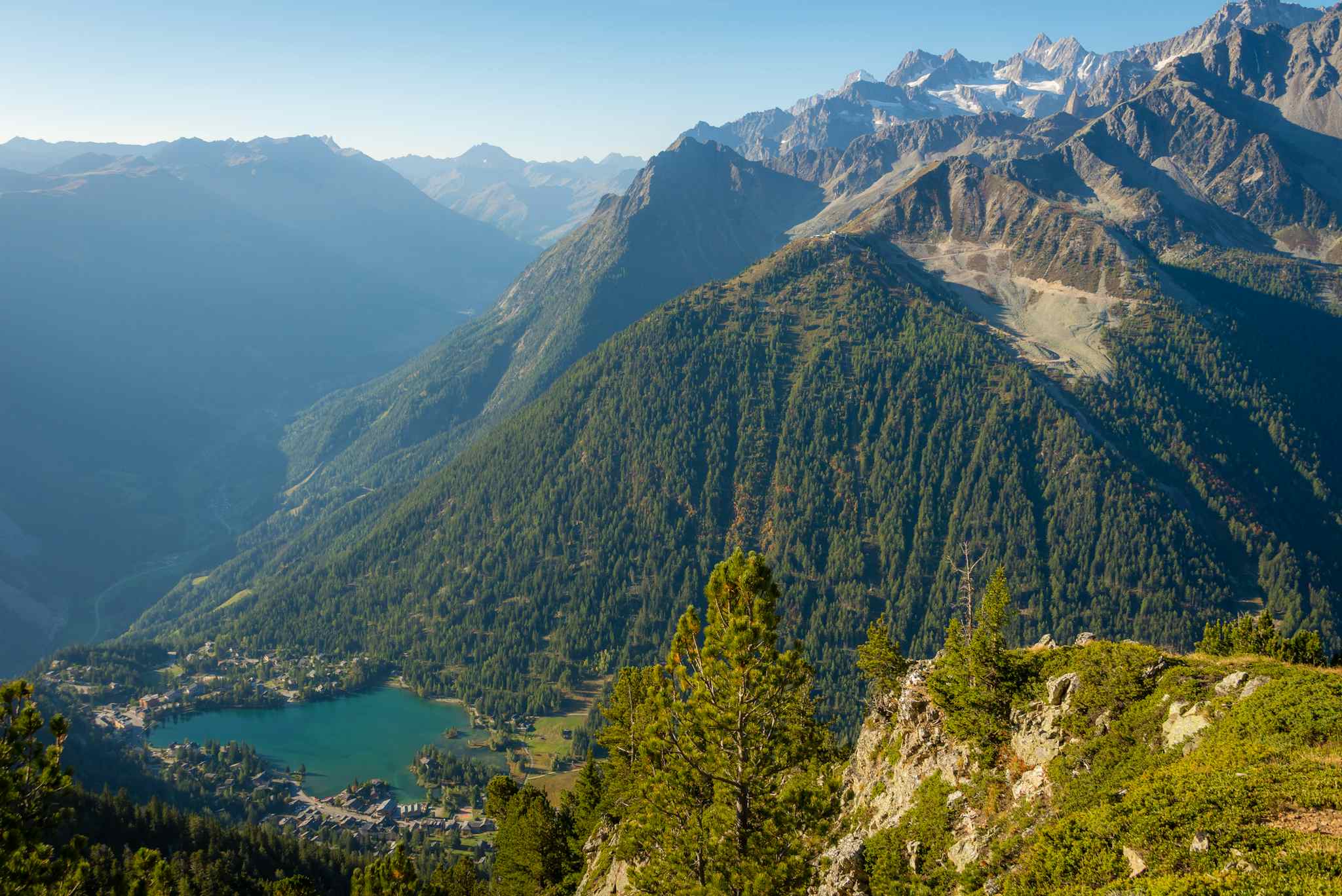
Hiking
Pick the trail back up straight from Trient, setting off after breakfast for a short hike to reach the Col de la Forclaz pass. Hike up through a pine and larch forest to join the high pastures of Bovine, from where you'll enjoy lunch with an expansive view of the Martigny Valley and the surrounding mountains. Wind your way down through the woods, cross cool mountain streams, and in the afternoon you'll arrive in Champex, a charming lakeside village where you'll spend the night.
Day 4
Champex to Val Ferret
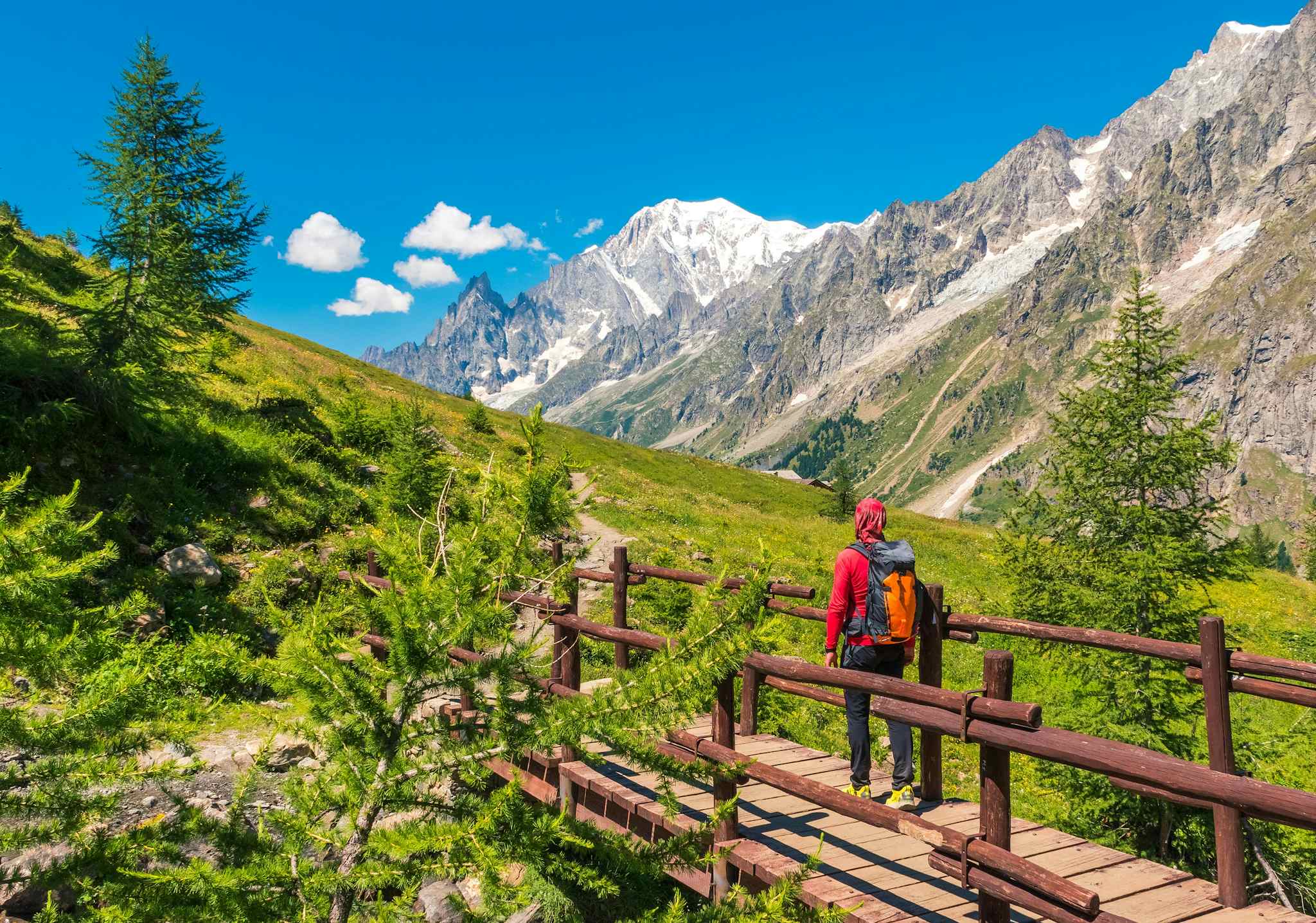
Hiking
Today's section starts from La Fouly after a short transfer from your hotel, picking back up the TMB trail as you begin to trek up the valley towards the Grand Col Ferret (2537m), the border between Switzerland and Italy. Reaching the top of the pass you'll see jaw-dropping views open out in front of you looking down the Val Ferret and the Italian side of the Mont Blanc massif. The towering peak of Mont Dolent (3823m) acts as the shared border of all three countries; next is the Grandes Jorasses and the Dent du Géant (4013m) and in the distance, the summit of Mont Blanc itself. After an epic border crossing, you'll tackle the descent to Arnouvaz, from where you'll be transferred to your next cosy hotel in Courmayeur. Enjoy a taste of some of the Aosta specialities offered in Courmayeur’s many atmospheric restaurants.
Day 5
La Visaille to Les Chapieux
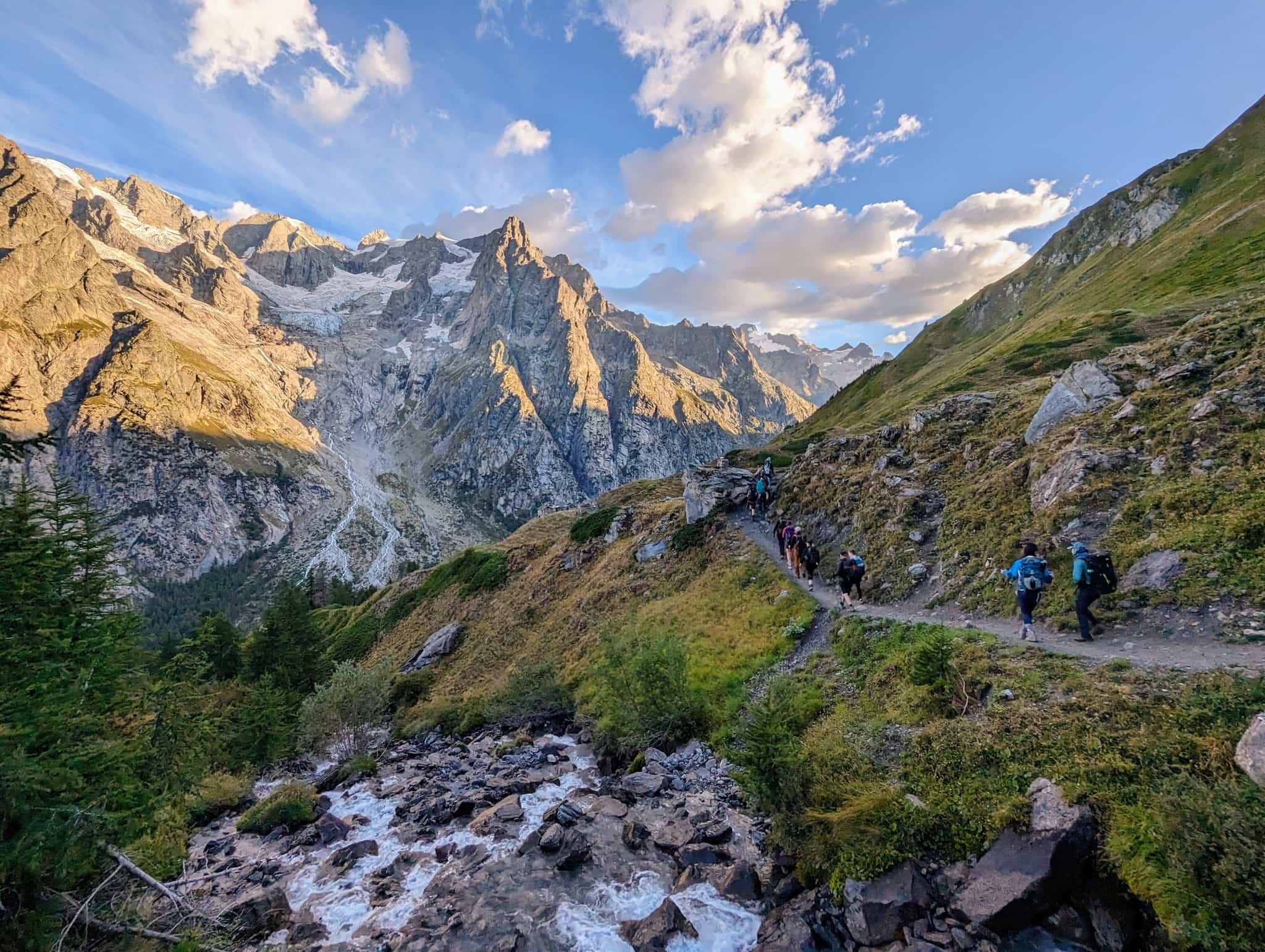
Hiking
Enjoy the short and incredibly scenic transfer to La Visailles first thing this morning as the hiking kicks off from the bottom of Val Veny, climbing the valley to Lac Combal and past the majestic Glacier du Miage which descends from high up on the flanks of Mont Blanc. Eventually, you'll reach the Col de la Seigne pass (2516m) where you'll say, "Arrivederci, Italia" and cross the border back into France. From here, you'll descend down the long remote valley to Les Chapieux (1549m) where you'll either spend the night in a typical Alpine lodge, or take a short transfer and overnight in Bourg Saint Maurice, depending on accommodation availability.
Day 6
Les Chapieux to Les Contamines
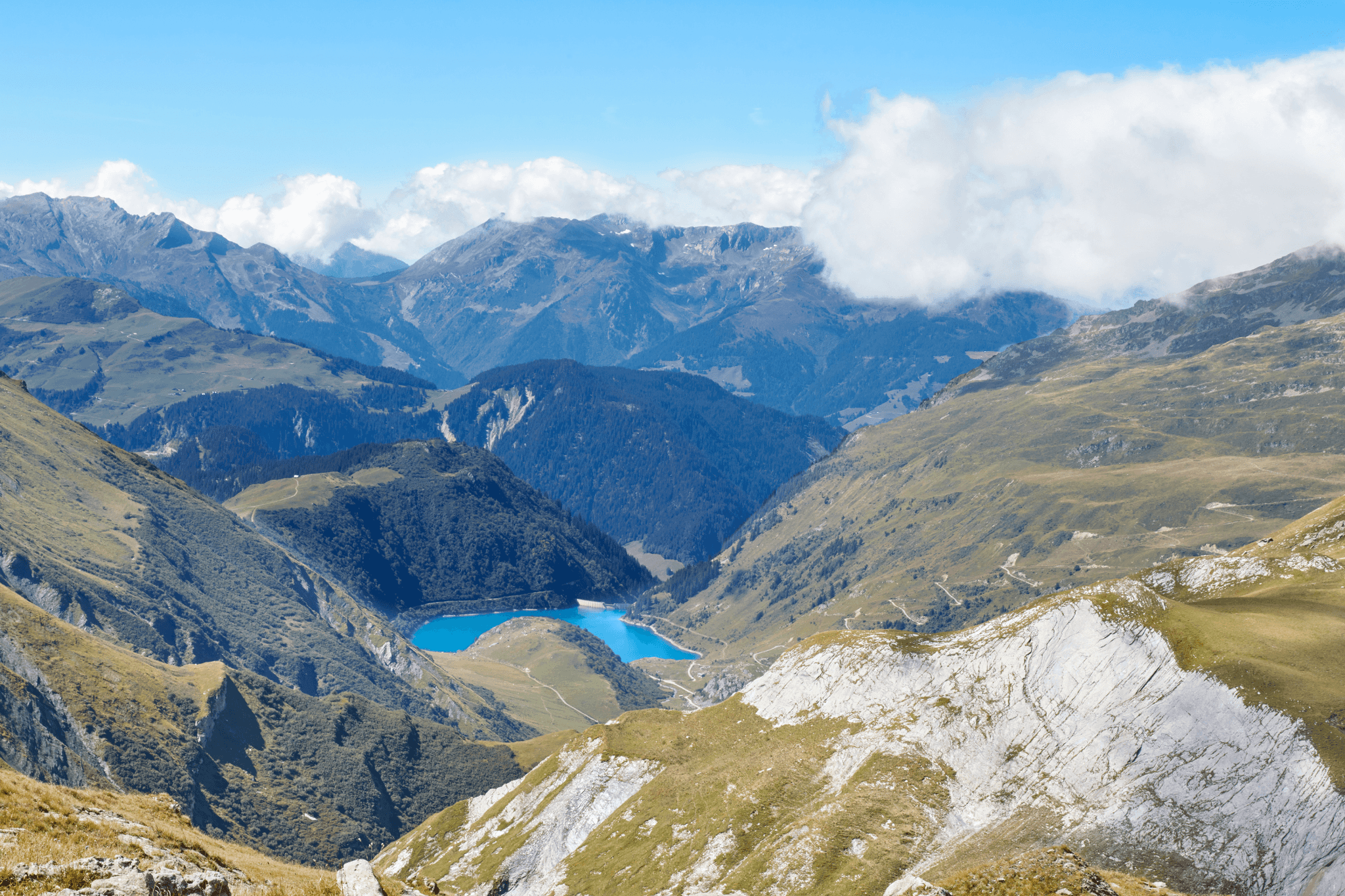
Hiking
The biggest day of the trip awaits today, setting off from Les Chapieux to tackle the steep ascent to the Col de la Croix du Bonhomme (2433m). There is a grand old refuge here to grab snacks and drinks from while you take in the ever-present and ever-changing views of the Mont Blanc range. After lunch, you'll continue on to the Col du Bonhomme (2329m) before taking a sharp descent down to the pastures of the Bois de la Rollaz, through pine forest, and eventually to an ancient Roman road which leads the way to the small chapel of Notre Dame de la Gorge. Follow the valley floor to the town of Les Contamines, where you'll rest and recover for the evening.
Day 7
The final climb, and back to Chamonix
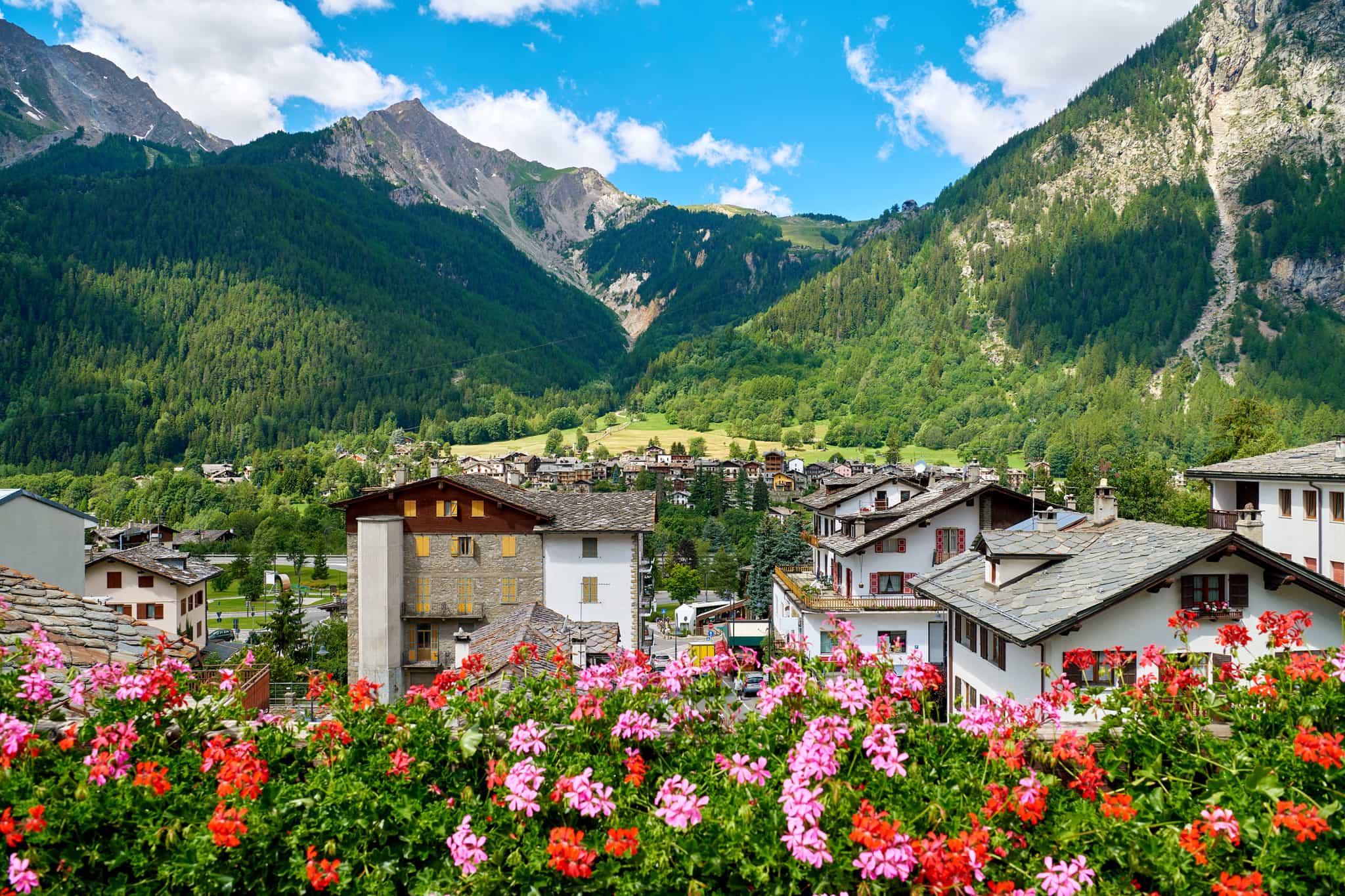
Hiking
Your final day on the Tour du Mont Blanc takes you from the village of Les Contamines up to to the hamlets of Gruvaz, Champel and Bionnassay – a typical Savoyard hamlet with a magnificent 17th-century chapel. From there, you'll take the path that brings you to the Col de Voza pass (1653m). You'll then take the Bellevue Gondola to descend to Les Houches, the traditional start/finish point of the TMB circuit, before hopping on the bus back to Chamonix where your epic Alpine adventure comes to an end.
Day 1
Breakfast
Lunch
Dinner
Day 2 – Day 6
Breakfast
Lunch
Dinner
Day 7
Breakfast
Lunch
Dinner
What is the food like?
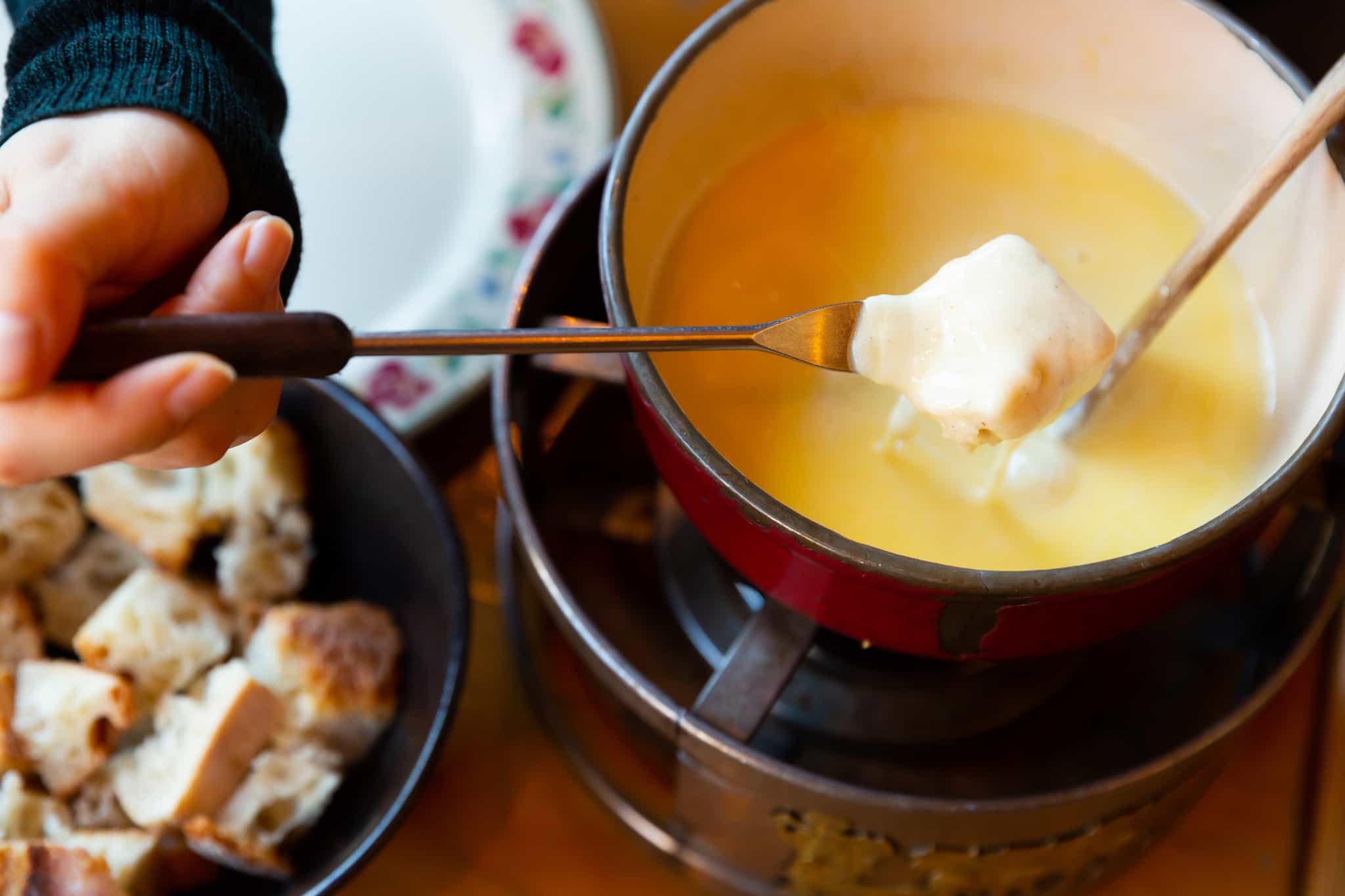
Breakfast at each of the hotels is usually continental – think juices, teas, coffee, yoghurt, bread and preserves, pastries, cheese and cereals. Your host will provide healthy packed lunches. They’re big and include things like sandwiches, wraps or a salad, as well as a selection of fresh fruits, muesli bars, chocolate and nuts (for example). Dinner each evening will be taken either in the hotel or at a nearby restaurant. There'll be a variety of classic options for you to choose from, and the classic French, Swiss and Italian variations will be on display as you dip your toe into each country along the route.
Dietary requirements, including vegetarian and vegan, can be catered for: just let your host know in advance.
What is the accommodation like?
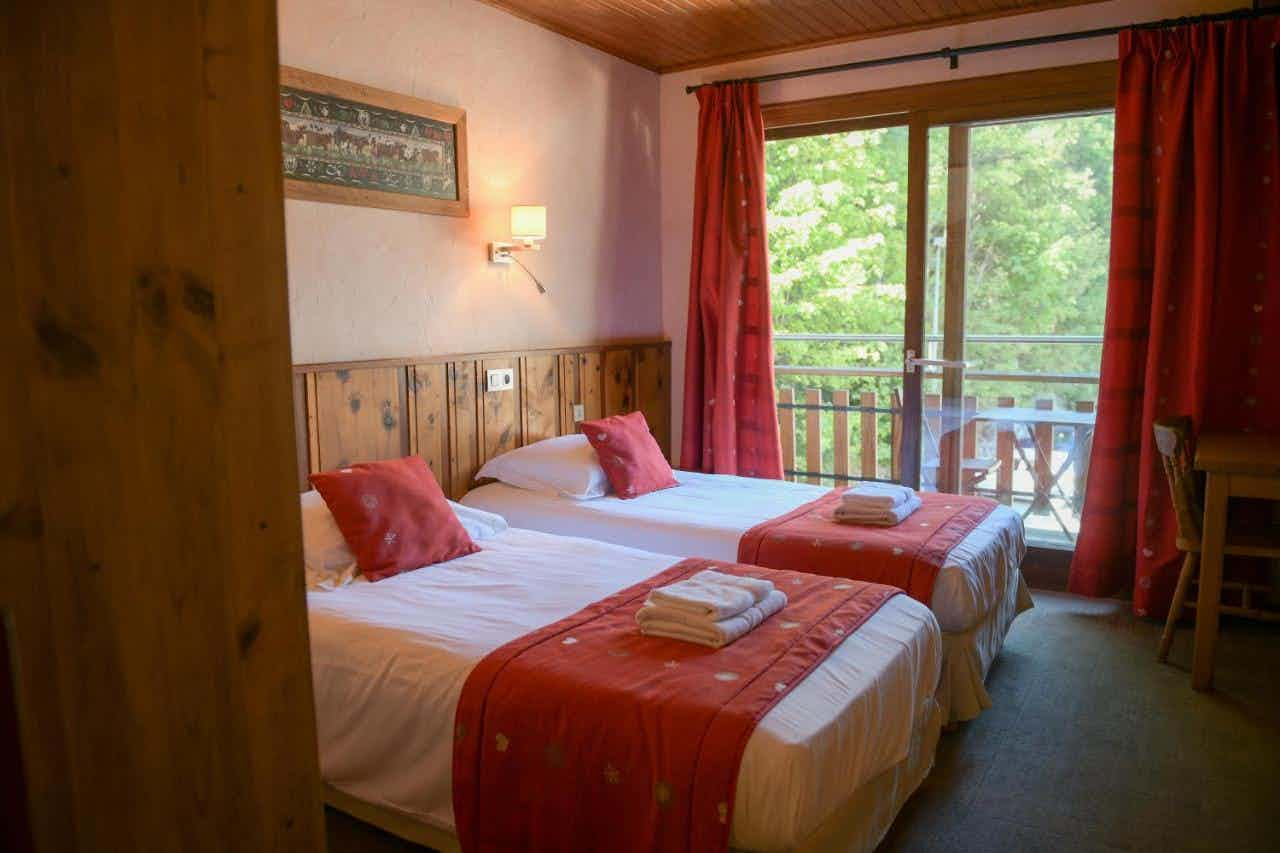
Alpine Village Hotels
Throughout the trip you'll bunk down in a variety of cosy hotels and mountain inns along the route, letting you soak up the quaint character of the Alpine villages nestled beneath the peaks. On certain days you'll be able to hike directly off the Tour du Mont Blanc to the doorstep of your overnight accommodation, whereas on other days a short transfer will shuttle you from the trail to your hotel, and back to pick up the next section of the trail the following morning.
You'll stay in same-sex, twin-share rooms. While the exact properties you'll stay in will depend on availability, the likely choices are listed below (any time an alternative is used, it will be of similar standard and style).
Argentière:
- Hotel Le Dahu - A classic alpine-style hotel with views facing the Aiguille Verte (4122m), providing twin-share rooms with en-suite bathrooms and WiFi. In a central location with a supermarket, pharmacy and shops nearby.
- Hotel La Couronne - One of the most historic hotels in the Chamonix valley, built in the 1860's but now with a modern renovation providing twin-share rooms with en-suite bathrooms and WiFi. The bar and restaurant offers both indoor dining and terrace seating in the summer season offering views of the magnificent valley.
Trient:
- Auberge du Mont Blanc - Located at the entrance of the village of Trient, the Auberge is part of a traditional Swiss atmosphere with its terrace, a bar and a restaurant. Twin-share rooms with shared shower/WC facilities on the same floor. WiFi.
Champex:
- Relais d'Arpette - Est. in 1926, this authentic mountain inn hosts hikers on the TMB in an alpine woodland setting above the Swiss village of Champex. Rooms are twin-share, bed linens and towels provided with shared showers/WC facilities on the same floor. WiFi. The hotel has an admirable sustainability focus, using local produce in the restaurant and conserving energy and water where possible.
Courmayeur:
- Edelweiss Hotel - A third-generation family run hotel in the historic part of Courmayeur, offers simply furnished twin-share rooms with en-suite bathrooms, a breakfast room, a bar with board games and WiFi, providing everything you need to relax after a day spent hiking on the trails.
Les Chapieux:
- Auberge Refuge de la Nova - A charming auberge that has been hosting hikers since 1970, offering simple twin-share rooms with shared shower/WC facilities, this is an authentic alpine accommodation situated in the wild Chapieux valley right on the TMB trail.
- Hotel L'Autantic - Based in Bourg Saint Maurice, a 25min transfer from Les Chapieux, this comfortable hotel offers twin-share rooms with en-suite bathrooms, Wifi, a pool and sauna, and breakfast room, with wonderful views of the Haute Tarentaise.
Les Contamines:
- Gite Le Pontet - Simple twin-share rooms with shared showers/WC facilities, the accommodation is located on site as part of the Le Pontent campsite, just over a kilometre from the famous Notre Dame de la Gorge on the TMB trail.
Upgrades
Unfortunately due to availability of accommodation on the Tour du Mont Blanc route, we are unable to offer an optional private room upgrade on this trip.
This trip has been rated as Challenging
This trek is no easy feat – so you’ll need to be in good physical shape and able to hike for between 6-8 hours per day (equating to 10-16km) with 1000m ascents/descents. That said, it's a great trip for those who are new to long-distance hiking as no previous experience is required.
The Tour du Mont Blanc trekking season is from June to September. Summer around Mont Blanc is generally warm and fair, but the weather can change very quickly in the high mountains, bringing cold rain and wind. Average temperatures range from 6 to 26 °C. It rains roughly half of the days each month, but storms generally pass through quickly. There can be snow on the mountain passes at the start of the season. Even in the peak of summer you can have very mixed conditions, especially when climbing over the high mountain passes above 2000m. Heatwaves have also been a feature of recent European summers. Our kit list is intended to guide you on what to pack for this trip.
The Area
Logistics
Starts
La Flégère cable car station, Chamonix
08:30 on Day 1
Ends
Chamonix
17:30 on Day 7
Transfers
Your adventure will begin at 08:30 on Day 1 at the La Flégère cable car station in Chamonix. You should arrive any time the day before the start date, and book a hotel of your choice.
There are regular buses from Geneva Airport and Geneva Bus Station to Chamonix, which take around an hour. Your host will be able to recommend an airport transfer company. Alternatively, you could also fly to Milan Airport (LIN) which is about three hours from Chamonix.
Your adventure ends in Chamonix at 17:30. You are free to make your own way back to Geneva or Milan airports, or Geneva railway station for those travelling onwards by train. We advise that you book any onward trains from Geneva to depart after 19:30, and any flights from Geneva or Milan to depart after 20:30. You also have the option to stay additional nights in Chamonix.
Travel options
Air travellers can fly into Geneva Airport (GVA) which is approximately one hour from Chamonix. Alternatively, you can fly into Milan Airport (LIN) which is about three hours from Chamonix.
For those who wish to avoid flying, why not travel by train instead? Chamonix is accessible by train via the St. Gervais-les-Bains (Le Fayet) station at the base of the valley which connects to Chamonix Mont Blanc train station. For example, take the Eurostar from London to Paris and then connect to a number of direct lines or an overnight sleeper train from Paris to St. Gervais-les-Bains, then on to Chamonix Mont Blanc station.
You can also travel to Geneva by various train routes from other parts of Europe and travel on to Chamonix from there by bus. Geneva bus station is a 5-minute walk or short taxi ride from the central train station. There are various bus services from Geneva bus station to Chamonix, the quickest option taking 1 hour and 8 minutes.
For those wanting to arrive a day early or extend their trip, your host is happy to recommend pre- or post-trip accommodation in Chamonix.
Enjoy 12.5% Off Outdoor Gear
In need of a few more items? All bookings receive a 12.5% discount to use at Cotswold Outdoor, Snow + Rock and Runner's Need.
What do I need to bring?
You'll be hiking with a daypack and your main luggage will be transferred between hotels. Avoid carrying too much weight as there is plenty of ascent and descent on the trail but pack so you are prepared for the changeable weather conditions, especially at higher elevations.
BAGS
- Overnight Duffle Bag for main luggage (Luggage Transfer included - Maximum Weight 15kg, One Bag Per Person)
- Hiking Daypack (20-35 litres)
- Waterproof liner for hiking pack
CLOTHES
- Waterproof Jacket (with hood) and Trousers
- Synthetic (e.g. Primaloft) or Down Puffy Jacket
- Fleece or merino pullover or sweater
- Synthetic or merino wool base layers
- Warm hat and gloves (really important in mixed weather conditions)
- Sunhat or cap
- Sunglasses
- Synthetic shirts/T-shirts and trousers (zip-off preferable) or shorts for hiking
- 2+ pairs of hiking socks, wool or synthetic (not cotton)
- Sturdy hiking boots or shoes (worn in)
- Comfortable clothes to wear in the evenings
- Comfortable light shoes for when not hiking
- Swimwear for hotel
OTHER
Universal travel plug adapter
Power bank or solar charger
Passports (and visas)
Travel insurance documents
Suncream (SPF 50+ recommended due to altitude)
Personal first-aid kit (inc. blister treatment)
Personal items (biodegradable toiletries, sanitary wear etc)
Alcohol hand-gel
Two reusable water bottles x1 litre, or a water bladder
OPTIONAL
Trekking poles (highly recommended)
Energy bars and snacks - read our article on Best Hiking Snacks
No optional extras are available for this trip.
Amazing adventure!
I had an absolutely amazing time and thoroughly enjoyed the trip! The mix of people on my tour was fantastic and really added to the whole experience. As a solo traveler, you never know what to expect, but there was a perfect blend of couples and other solo hikers. From the start, there was a wonderful feeling of friendship. We shared many backgrounds, stories, and laughs, and there was always someone to talk to along the trails. Our guide was incredible. He was knowledgeable, helpful, and great to chat with. He brought the group together while also allowing everyone to go at their own pace as much as possible, all while ensuring our safety. A few fixes need to be made to the itinerary, as the distances and elevations didn't match up to what we did day to day. However, this did not detract from the enjoyment of the hike at all. The scenery was incredible every step of the way, and I'm not sure how I am expected to return to normal life without having mountaintop picnics for lunch each day. This trip exceeded my expectations, and I can't wait for the next adventure!
We partner with the World Land Trust to ensure this trip achieves Net-Zero emissions. We also support their Buy an Acre programme, helping local communities to buy and protect natural habitats in perpetuity.
What's the number?
It works out on average at 120kg of CO2 emissions per person, including all local transport, accommodation, food, activities, guides, staff and office operations.
The only thing it doesn’t include right now is flights and travel to the destination. We do make an overall estimate across all our customers separately, but as we don’t book flights, have customers from all corners of the world, and no way of reliably knowing their travel plans, we simply can’t include an individual number in the figure on display here. We’ve got a goal to fix that, so that when you book, there is a way to measure and mitigate the carbon emitted by your flight too.
But what does the number mean?
Yep, hard to picture eh? To give you an idea:
- Driving 1000miles/1609km would be approx. 281kg of CO2 in an average car (or 140.5kg per person if there was 2 of you in it).
- A return economy class flight London - New York would be approx. 1,619kg (1.66 tonnes) per person.
- 10 trees in a temperate forest are estimated to remove approx. 250kg of CO2 from the air in a period of 5-10 years.
What are we doing about it?
Our trips are relatively low-carbon by design, and we're working with all our hosts to develop long term carbon reduction plans. We partner with the World Land Trust to ensure this trip achieves Net-Zero emissions. We also support their Buy an Acre programme, helping local communities to buy and protect natural habitats in perpetuity, ensuring the protection of the reserve and its wildlife.
Want to know more?
Amazingly, no international travel company has ever publicly published their carbon measurements before, as far as we know. We believe that must change, quickly. So we’re openly sharing the method we used in the hope that other companies will be able to more easily follow suit and build on what we've done so far. You'll find it all here.
This trek is no easy feat – so you’ll need to be in good physical shape and able to hike for between 6-8 hours per day (equating to 10-16km) with 1000m ascents/descents. That said, it's a great trip for those who are new to long-distance hiking as no previous experience is required.
Sure can! Over 70% of our travellers travel solo, it’s a great way to meet like-minded people.
The Tour du Mont Blanc trekking season is from June to September. Summer around Mont Blanc is generally warm and fair, but the weather can change very quickly in the high mountains, bringing cold rain and wind. Average temperatures range from 6 to 26 °C. It rains roughly half of the days each month, but storms generally pass through quickly. There can be snow on the mountain passes at the start of the season. Even in the peak of summer you can have very mixed conditions, especially when climbing over the high mountain passes above 2000m. Heatwaves have also been a feature of recent European summers. Our kit list is intended to guide you on what to pack for this trip.
Luggage transfers are included in the cost of the trip, so your main bag will be transported from hotel to hotel while you hike the sections each day. You just need to bring a hiking pack to take whatever you need each day while on the trail.
We recommend checking out the country-specific information and also talking to a travel nurse.
The tap water in the Alps is safe to drink, so bring along a minimum of two litres carrying capacity in water bottles and/or a water bladder to fill up each morning before setting off. There will be opportunities to fill up along the route at refuges and other stops – your guide will advise as you go.
This trip visits locations at or above 2500m. At this altitude some people may experience symptoms associated with Altitude Sickness, also known as Acute Mountain Sickness (AMS). Previous experience at high altitude is not necessarily an indicator of future performance. Your guide(s) are trained to mitigate the risks associated with altitude, by carefully managing the rate of ascent and the intensity of the activity, and to provide the appropriate support response should someone feel ill during the trip. Should you experience health issues during your trip you should inform your guide immediately so the proper care can be provided. Owing to the nature of this trip, it is essential that your personal travel insurance policy provides cover up to the maximum altitude visited on this trip as well as emergency medical evacuation by helicopter.
Our recommended travel insurance provider is Campbell Irvine.
Travel insurance is compulsory for all of our adventures and you are required to provide your policy information before departing.
Your insurance should include adequate protection for overseas medical treatment, evacuation/repatriation, your baggage and equipment and the specific activities involved on your adventure. We also strongly recommend it includes cancellation and curtailment insurance, should you be unable to join your trip for specific reasons such as illness.
We fully endorse Campbell Irvine as their insurance offers all of the above, so get in touch with them or call on 020 7938 1734 to get your insurance sorted. We suggest that you book travel insurance as soon as you book your adventure, just to cover you for any last-minute life changes. We know you’re an active lot and injuries do happen!
We automatically convert prices from the local currency that a host receives to your chosen currency. We update our exchange rates on a daily basis so this does mean that prices displayed on the site are subject to currency fluctuations, which is why you may see them change over time.
If you wish to change the currency you pay in, head to the bottom of the page.
All of our group adventures are specially designed for adults to enjoy (18+) as we want these adventures to bring together outdoorsy people who are truly like-minded. Children can be accommodated on some private departures.
You're always in good company on one of our adventures.
Our trips are typically made up of a mixture of solo travellers and small groups of 2 or 3 friends, with most in their 30s-50s.
Our sociable adventures are solo-friendly by design and naturally attract outdoorsy people with a shared mindset; a love for adventure, a desire to push themselves and meet awesome, like-minded people along the way.
It’s this camaraderie that has so often turned a great adventure into a life-changing one.
Don't just take our word for it:
- 95% of people rate the group dynamics on our trips 5/5
- 90% of people recommend joining a trip to make new friends
- 75% of people have met people on our trips that they would now consider friends
See here for more info about the Much Better Adventures tribe.
Interested in a more exclusive experience? Opt for a 'Private Group' through the dates and prices tab to book this adventure for just you and your chosen companions.
Our team of Adventure Hunters create exclusive adventures with highly vetted, specialist hosts. We only work with independent, local in-destination experts who know the very best places to explore and how to stay safe. Read more information about the local teams we partner with.

Got questions? We've got answers
We've got your back
Guaranteed to run
All our trips are now guaranteed to run. Once you’ve booked your spot you can immediately make your travel arrangements, no uncertainty, no hanging about (excludes 'request to book' departures). Full details
Flexible payments
Secure your spot with the minimum deposit and pay off the remaining balance in as many instalments as you like, with no interest or fees. Full details
Happiness Guarantee
We’re so confident you’ll have an amazing time we’ll put our money on it. Full details
Full financial protection
To give you complete peace of mind we’re backed by ABTOT, ABTA and ATOL memberships. Full details
Tried & Trusted
We’re rated ‘Excellent’ on Trustpilot with over 900 verified trip reviews averaging 4.8/5.
Connect before you go
You'll be invited to join a WhatsApp group to get to know each other before your big adventure together. Full details
DEPARTURE DATES
Tuesday • 6th August 2024
to Monday • 12th August 2024
Fully Booked
Monday • 26th August 2024
to Sunday • 1st September 2024
Fully Booked
